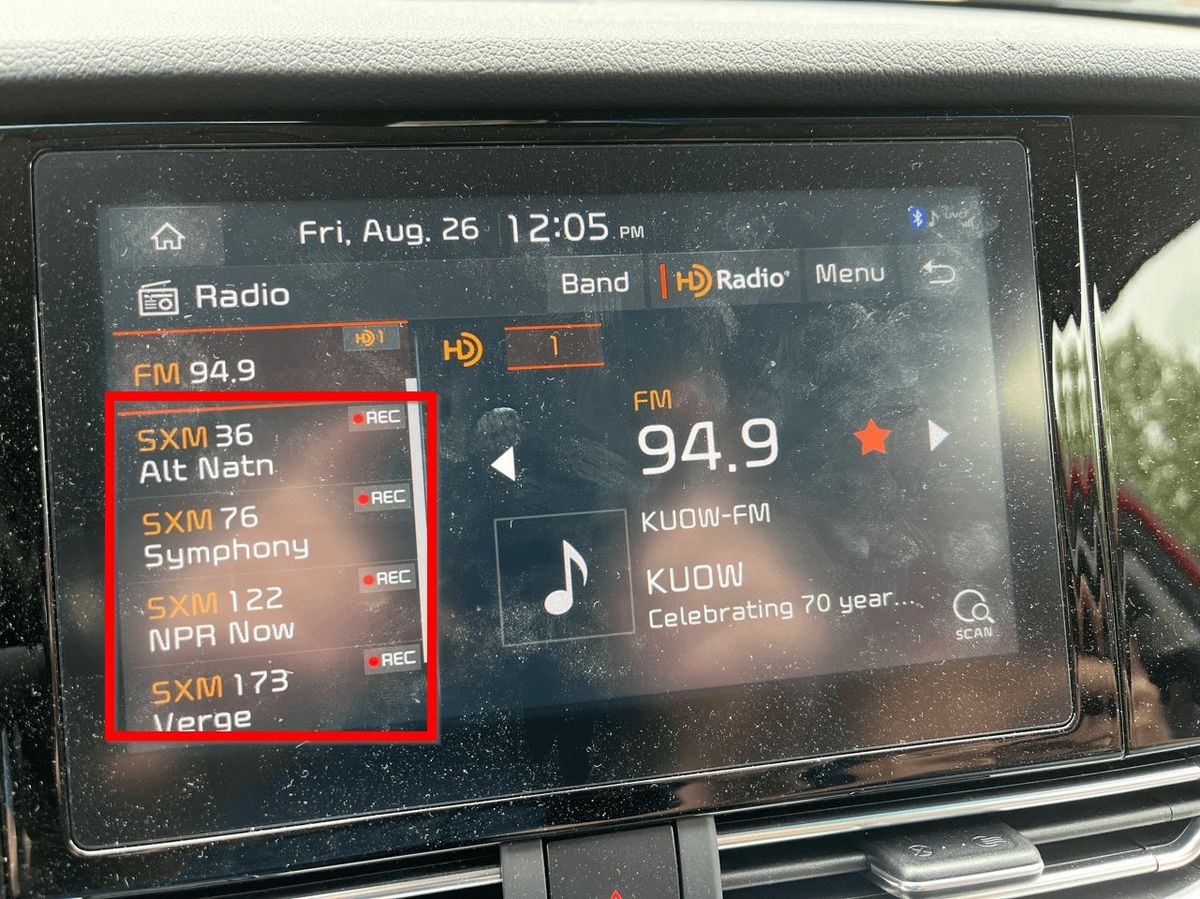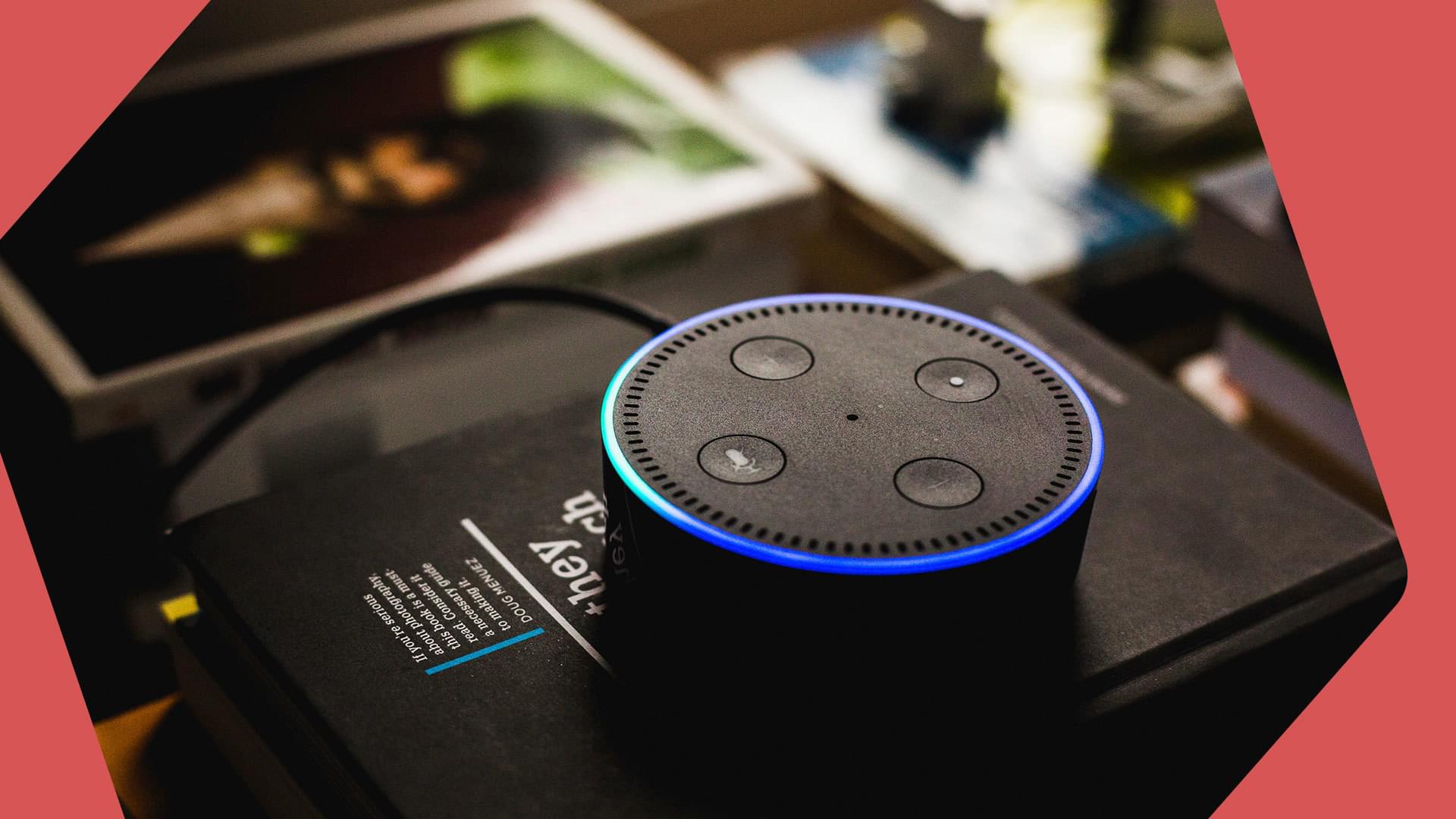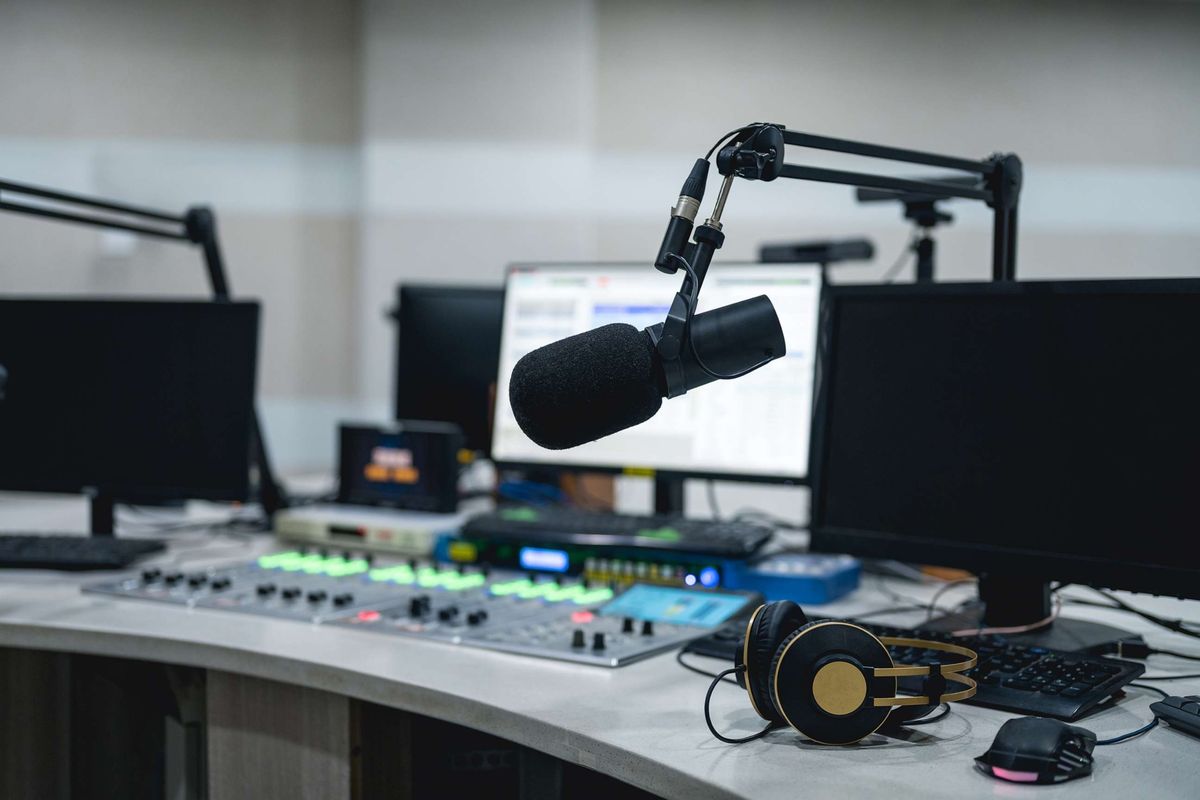Home>Devices & Equipment>Radio>Do Radio Stations Know How Many Listeners They Have


Radio
Do Radio Stations Know How Many Listeners They Have
Published: November 11, 2023
Discover if radio stations have knowledge of their listener count. Learn how stations track their audience and gather insights in this informative article.
(Many of the links in this article redirect to a specific reviewed product. Your purchase of these products through affiliate links helps to generate commission for AudioLover.com, at no extra cost. Learn more)
Table of Contents
- Introduction
- Importance of knowing the number of listeners
- Traditional methods of measuring listenership
- Challenges in accurately measuring listenership
- Advancements in technology for measuring listenership
- Current methods used by radio stations to estimate listenership
- Criticisms and limitations of current measurement methods
- Future possibilities for improving measurement of listenership
- Conclusion
Introduction
Radio has been a beloved medium of communication and entertainment for decades, connecting people through music, news, and storytelling. It has shaped cultures, provided a platform for diverse voices, and served as a source of information and entertainment. But have you ever wondered how radio stations know how many listeners they have?
Knowing the number of listeners is crucial for radio stations as it helps them understand their reach and impact. It allows stations to attract advertisers, justify advertising rates, and make informed programming decisions. In a highly competitive media landscape, accurate measurement of listenership is essential to stay relevant and thrive.
Historically, radio stations have relied on traditional methods to estimate their audience size, which involved surveys, diaries, and monitoring listening habits through dedicated devices. However, these methods were often flawed and provided only a snapshot of listenership at specific times. As technology has advanced, so too have the methods for measuring listenership.
In recent years, radio stations and industry analysts have turned to more sophisticated and accurate techniques to measure listenership. This includes utilizing digital platforms, examining streaming data, and incorporating listener feedback from online platforms. These advancements in technology have revolutionized the way radio stations estimate their audience size and gain insights into listener behavior.
However, the measurement of listenership still poses challenges. With the rise of digital streaming services and the fragmentation of radio audiences across various platforms, getting a comprehensive and accurate understanding of listenership has become more complex.
In this article, we will explore the traditional methods of measuring listenership, the challenges faced in accurately tracking listenership, the advancements in technology that have improved measurement methods, and the current approaches used by radio stations to estimate their audience size. Furthermore, we will examine the criticisms and limitations of current measurement methods and explore future possibilities for improving the measurement of listenership in the radio industry.
Importance of knowing the number of listeners
Understanding the number of listeners is of utmost importance for radio stations. It provides valuable insights into the reach and impact they have on their target audience. Here are some key reasons why knowing the number of listeners is crucial:
- Attracting advertisers: Advertisers are a vital source of revenue for radio stations. Knowing the number of listeners enables stations to demonstrate their size and reach, making them an attractive choice for potential advertisers. Advertisers are often interested in the demographics of a station’s audience as well, and accurate listenership data helps stations target their advertising offers effectively.
- Setting advertising rates: The number of listeners a radio station has directly impacts the rates they can charge for advertising slots. Stations with a larger audience can command higher rates as they offer advertisers a greater potential reach. Accurate listenership data helps stations justify their pricing structure and negotiate fair partnerships with advertisers.
- Programming decisions: Understanding listener preferences and behavior helps radio stations tailor their programming to cater to their audience’s interests. Knowing the number of listeners allows stations to identify popular shows, genres, or hosts, which can guide their decision-making. Moreover, tracking listenership trends helps stations stay relevant and adapt their programming to changing audience preferences.
- Evaluating audience engagement: Measuring listenership goes beyond just knowing the number of people tuning in. It provides insights into the level of engagement and loyalty of the audience. By analyzing listenership data, radio stations can determine the average time spent listening, peak listening hours, and patterns of audience interaction. This knowledge helps stations strategize and create content that resonates with their listeners.
- Benchmarking against competitors: Knowing the number of listeners allows radio stations to benchmark their performance against competitors in the industry. By comparing their audience size and demographic data, stations can assess their market position and identify growth opportunities. This information is valuable for staying competitive and making informed decisions to stay ahead in a saturated market.
Overall, having accurate and up-to-date knowledge of the number of listeners is crucial for the success and sustainability of radio stations. It not only helps them attract advertisers and set competitive rates but also guides their programming decisions, evaluates audience engagement, and allows for benchmarking against competitors. In an ever-evolving media landscape, knowing the number of listeners provides radio stations with the insights they need to stay relevant, engage their audience, and thrive in the industry.
Traditional methods of measuring listenership
Before the advent of advanced technology, radio stations relied on traditional methods to estimate their listenership. While these methods were widely used, they had limitations and provided only a partial understanding of audience size. Here are some of the traditional methods used to measure listenership:
- Surveys: Radio stations conducted surveys by reaching out to a sample of listeners and asking them about their radio listening habits. These surveys often included questions about favorite stations, preferred genres, and time spent listening. While surveys provided some insights, they were based on self-reported data and were subject to respondent bias and memory inaccuracies.
- Diaries: Some radio stations distributed diaries to a sample of listeners, asking them to record their listening habits over a specific period. These diaries captured details such as the station tuned in, duration of listening, and preferred programs. Diaries provided more accurate data than surveys but relied on listeners’ compliance and consistency in filling out the diary.
- Listening devices: Another method used involved distributing portable devices to a sample of listeners that automatically logged the stations they tuned in to. This method provided more accurate data as it relied on actual listening behavior. However, it was limited to the participants who agreed to carry the devices and may not have captured a comprehensive representation of the entire audience.
- Call-in campaigns: Radio stations sometimes encouraged listeners to call in or text their addresses or phone numbers to participate in contests or receive promotions. This method allowed stations to collect data on the number of responses received, providing a rough estimate of listenership. However, it was not an accurate or scalable method for measuring overall listenership.
While these traditional methods provided some insight into listenership, they were often flawed and lacked accuracy and comprehensiveness. The reliance on self-reporting, memory recall, and limited sample sizes led to inconsistencies and skewed results.
With the emergence of new technologies and data analysis methods, radio stations now have access to more sophisticated and accurate approaches for measuring listenership. These advancements have revolutionized the way audience size is estimated, providing a more comprehensive understanding of radio listenership.
Challenges in accurately measuring listenership
Accurately measuring listenership in the radio industry poses several challenges due to the evolving nature of technology and changing listener habits. Here are some key challenges faced in accurately measuring listenership:
- Diverse listening platforms: With the rise of digital platforms and streaming services, radio audiences are no longer confined to traditional AM/FM broadcasts. Listeners now have a myriad of choices, including online streaming, podcasts, and mobile apps. The fragmentation of listeners across various platforms makes it challenging to gather comprehensive data on overall listenership.
- Device and platform compatibility: With listeners accessing radio content through different devices such as smartphones, tablets, smart speakers, and connected cars, tracking and measuring listenership across these diverse platforms becomes complex. Ensuring compatibility across devices and platforms is crucial to obtaining accurate data.
- Privacy concerns: As radio stations collect and analyze data to measure listenership, privacy concerns come to the forefront. Balancing the need for accurate data with ensuring data privacy and security is a challenge. Stations must adhere to data protection regulations and obtain consent from listeners for data collection and usage.
- Sampling bias: Traditional methods of measuring listenership often relied on small sample sizes, which may not be representative of the entire audience. Sampling bias can lead to skewed results and inaccurate estimations of listenership. To minimize this bias, larger and more diverse samples need to be collected for a more accurate understanding of audience size.
- New listening habits: The way people consume radio content has evolved with the advent of technology. Time-shifting and on-demand listening have become popular, allowing listeners to tailor their radio experience to their schedules. These new listening habits pose challenges in accurately capturing and measuring audience engagement and listenership.
- Data accuracy and reliability: The accuracy and reliability of the data collected for measuring listenership are crucial for meaningful analysis. Technical issues, data discrepancies, and data collection errors can lead to inaccurate results. Ensuring data accuracy and implementing rigorous quality control measures are essential to maintain reliability in measuring listenership.
Overcoming these challenges requires radio stations to stay abreast of technological advancements, establish robust measurement methodologies, and adopt innovative tools for gathering and analyzing data. It is imperative to continually adapt and improve measurement techniques to ensure accurate and comprehensive understanding of radio listenership in a rapidly evolving digital landscape.
Advancements in technology for measuring listenership
Technology has played a pivotal role in transforming the way listenership is measured in the radio industry. New advancements have provided radio stations with more accurate, comprehensive, and real-time data on their audience. Here are some key advancements in technology for measuring listenership:
- Digital platforms: The widespread adoption of digital platforms has allowed radio stations to gather data on listenership in real-time. Streaming services, online radio players, and podcasting platforms provide valuable insights into the number of listeners, their location, and listening preferences.
- Mobile apps and analytics: Many radio stations have developed mobile apps that enable listeners to stream live broadcasts or catch up on past shows. These apps often incorporate analytics features that track user engagement, duration of listening, and geographic data. This data provides stations with a deeper understanding of their audience’s behavior and preferences.
- Social media integration: Radio stations now have the ability to reach and engage with their listeners through social media platforms. By analyzing social media metrics such as followers, likes, comments, and shares, stations can gauge the level of audience engagement and assess the impact of their content on various social media channels.
- Streaming data: The availability of streaming data has revolutionized the measurement of listenership. Stations can track the number of listeners streaming their content, analyze listening patterns, and gain insights into the popularity of specific shows or hosts. Streaming data offers a more accurate representation of audience size compared to traditional methods.
- Data analytics tools: Advanced data analytics tools have emerged, allowing radio stations to analyze large volumes of data and derive meaningful insights. By leveraging these tools, stations can perform in-depth listener segmentation, identify trends, and make data-driven decisions to optimize programming and understand their audience better.
- Audience measurement companies: Several specialized companies provide robust audience measurement services to help radio stations gather accurate and comprehensive data. These services employ advanced measurement techniques, data integration, and statistical modeling to provide detailed insights into listenership.
These advancements in technology have not only improved the accuracy of measuring listenership but also provided radio stations with a more holistic understanding of their audience. Real-time data, enhanced analytics, and integration with digital platforms have enabled stations to make informed programming decisions, attract advertisers, and engage with their listeners more effectively.
However, it is important to note that technology is constantly evolving, and radio stations must stay updated with the latest advancements to ensure they are utilizing the most effective methods for measuring listenership. By embracing technology and leveraging the power of data, radio stations can gain a competitive edge and thrive in the dynamic and ever-changing media landscape.
Current methods used by radio stations to estimate listenership
Radio stations now employ a combination of traditional and modern methods to estimate their listenership. These methods take advantage of technology and data analysis techniques to provide more accurate and comprehensive insights into audience size. Here are some of the current methods used by radio stations to estimate their listenership:
- Radio Ratings: Radio ratings, conducted by specialized research companies, rely on a combination of diary-based surveys and electronic monitoring. Selected participants are asked to maintain diaries or use electronic monitoring devices to record their listening habits over a specific period. The data collected is then extrapolated to estimate listenership for specific demographics, time slots, and geographical regions.
- Streaming and digital analytics: Radio stations track their streaming data and digital analytics to gain insights into audience behavior. They analyze the number of listeners streaming their content online, duration of listening, geographic distribution, and engagement metrics on digital platforms and mobile apps. This approach provides a more accurate understanding of listenership on digital platforms.
- Social media engagement: Radio stations monitor their social media platforms to gauge audience engagement and assess the impact of their content. Monitoring metrics such as followers, likes, comments, and shares helps stations understand the level of brand loyalty, audience reach, and content resonance among their listeners.
- Website and app analytics: Radio stations analyze website and mobile app analytics to gather information about audience engagement and behavior. They track metrics such as unique visitors, page views, time spent on the website or app, and popular content. These insights help stations understand the preferences and habits of their online audience.
- Audience feedback and surveys: Radio stations actively seek feedback from their listeners through call-ins, text messages, online surveys, and focus groups. Direct feedback allows stations to gather qualitative insights, understand listener preferences, and tailor programming to meet audience expectations.
- Audience measurement services: Radio stations often partner with audience measurement companies that use sophisticated methodologies to analyze data from multiple sources. These companies provide comprehensive reports on listenership, demographics, listening habits, and market share, helping stations make informed decisions based on reliable data.
By combining these methods, radio stations can achieve a more accurate estimation of their listenership across various platforms and demographics. The integration of traditional survey methods with streaming data, digital analytics, and audience feedback helps stations develop a more holistic understanding of their audience size and listening habits.
It is important to note that each method has its limitations and potential biases. Therefore, radio stations often employ multiple methods to validate and cross-check the data, ensuring a more accurate representation of their listenership.
Looking forward, radio stations are continuously exploring new measurement techniques and technologies to enhance their understanding of listenership. These advancements will likely pave the way for even more precise measurements and valuable insights into audience behavior and preferences in the ever-evolving radio landscape.
Criticisms and limitations of current measurement methods
While current measurement methods have significantly advanced the way radio stations estimate listenership, they are not without their criticisms and limitations. It is important to acknowledge these shortcomings in order to understand the potential biases and areas for improvement. Here are some of the criticisms and limitations of current measurement methods:
- Sample size and representation: Sampling methods used in audience measurement may not fully represent the diversity of the population. Small sample sizes and limited demographics can lead to biased results and inaccurate estimations of overall listenership. It is crucial to ensure that the sample is representative of the target audience to obtain reliable data.
- Self-reporting and recall accuracy: Traditional methods relying on self-reported data, such as diaries and surveys, are prone to inaccuracies and memory biases. Participants may not accurately recall their listening habits, leading to inconsistencies in the data. While efforts are made to improve accuracy, these limitations still exist.
- Streaming platform disparities: The measurement of listenership across different streaming platforms can be challenging due to variations in data collection methodologies and reporting standards. Inconsistencies in streaming data can impact the accuracy of estimations, making it difficult to compare listenership figures across platforms.
- Privacy concerns and sampling consent: The collection of listener data for measurement purposes raises privacy concerns. Stations must ensure compliance with privacy regulations and obtain explicit consent from listeners to collect and use their data. Obtaining consent from a representative sample can be challenging and may introduce bias into the results.
- Incomplete audience engagement metrics: While current methods provide insights into listenership, they may not capture the full extent of audience engagement. Metrics such as streaming duration, social media interactions, or website visits do not always reflect the depth of listener engagement or emotional connection with the content.
- Fragmented listening habits: Fragmentation of listening habits across various platforms and devices makes it difficult to gain a comprehensive understanding of an individual’s overall listening behavior. Tracking listenership across different platforms and integrating data from multiple sources remains a challenge for accurate measurement.
It is important for radio stations and measurement companies to address these criticisms and limitations to improve the accuracy and reliability of listenership measurement. Efforts should be made to increase sample sizes, ensure representativeness, enhance data collection methodologies, and actively seek feedback from listeners to gather a more comprehensive understanding of their habits and preferences.
Despite these limitations, current measurement methods still provide valuable insights into listenership trends and audience behavior. They serve as a foundation for radio stations to make informed programming decisions, attract advertisers, and understand their market position. However, continued research and advancements in measurement techniques are essential to further refine the accuracy and effectiveness of estimating listenership.
Future possibilities for improving measurement of listenership
The measurement of listenership in the radio industry is constantly evolving, driven by advancements in technology and changing listener behavior. As the industry continues to adapt to the digital landscape, there are several exciting possibilities for improving the measurement of listenership. Here are some future possibilities:
- Integration of data sources: The future of listenership measurement lies in integrating data from multiple sources. By combining data from traditional surveys, streaming services, social media platforms, website analytics, and mobile apps, radio stations can gain a more comprehensive understanding of their audience. Data integration would provide a holistic view and more accurate estimations of listenership on various platforms.
- Enhanced data analytics: As technology advances, data analytics techniques and tools will continue to evolve. Machine learning and artificial intelligence algorithms can be leveraged to analyze large datasets and derive deeper insights into listener behavior, preferences, and engagement patterns. Advanced analytics models can provide actionable recommendations for programming decisions and audience targeting.
- Individual listener tracking: Advancements in technology may enable radio stations to track individual listener behavior across different platforms and devices. This level of tracking would provide a more personalized understanding of each listener’s preferences, allowing for customized recommendations and targeted content delivery. However, privacy concerns and data protection regulations must be considered in implementing such tracking methods.
- Voice-activated devices and smart speakers: With the growing popularity of voice-activated devices and smart speakers, radio stations can leverage these platforms to gather more accurate listenership data. Voice commands and interactions with these devices can provide insights into listening habits, content preferences, and user engagement.
- Improved audience panels: Investing in larger and more diverse audience panels can lead to more representative data and reduced sampling biases. Engaging a broader range of participants in surveys and diary-keeping activities can provide a more accurate depiction of overall listenership and demographics.
- Real-time tracking and reporting: Advancements in technology allow for real-time tracking and reporting of listenership data. Instant access to up-to-date metrics can help radio stations make immediate adjustments to programming, advertising strategies, and audience engagement initiatives.
The future possibilities for improving the measurement of listenership in the radio industry are promising. As technology continues to advance and audience consumption habits evolve, radio stations have the opportunity to gather more accurate, comprehensive, and real-time data. By embracing these possibilities and incorporating innovative measurement methods, radio stations can better understand their audience, optimize their programming, and enhance their overall performance in a rapidly changing media landscape.
Conclusion
Accurately measuring listenership is crucial for radio stations to understand their audience size, attract advertisers, and make informed programming decisions. Over the years, the radio industry has made significant advancements in the methods used to estimate listenership, leveraging technology and data analysis to provide more accurate and comprehensive insights.
Traditional methods, such as surveys, diaries, and monitoring devices, laid the foundation for measuring listenership but had limitations in terms of sample size, accuracy, and representation. However, with the emergence of digital platforms, streaming services, and data analytics, radio stations now have access to more sophisticated measurement techniques.
Current methods used by radio stations blend traditional survey methodologies with digital analytics, streaming data, social media engagement, and audience measurement services. These methods offer a more holistic understanding of listenership across various platforms and demographics.
Despite the advancements, there are criticisms and limitations to current measurement methods, including sampling biases, self-reporting inaccuracies, fragmented listening habits, and privacy concerns. However, the industry recognizes the need for continuous improvement and is exploring future possibilities.
The future of listenership measurement holds many exciting possibilities. Integration of data sources, improved data analytics, individual listener tracking, voice-activated devices, and real-time tracking are just some of the potential advancements on the horizon.
In conclusion, accurate measurement of listenership is an ongoing challenge for radio stations. However, with the advancements in technology and evolving measurement methodologies, radio stations can gain deeper insights into their audience’s preferences, behavior, and engagement. By embracing these advancements and continuously refining measurement techniques, radio stations will be well-equipped to navigate the dynamic media landscape, attract advertisers, and deliver content that resonates with their listeners.











